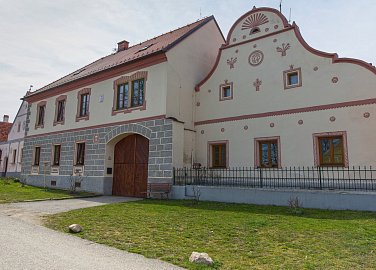Holašovice
The village dates back to the first half of the 13th century. The layout of its village green suggests that it was founded on a greenfield as part of the colonization effort at the south Bohemian frontier. The first half of the 16th century was literally a disaster for the local inhabitants. Almost the entire original Czech population died from the plague. However, the village was settled by German settlers almost immediately. World War Two left another huge scar on life in Holašovice. The efforts of the local German population to join the village with Germany were successful. The village thus became part of the Reich territory, leading to a forceful resettlement of the Czech minority into the interior. The war was followed by expulsion in 1946, affecting the vast majority of the German-speaking inhabitants of Holašovice. The vacated farmsteads were settled by Czech people from the interior. Not much construction took place in the village after the War; mostly just repairs and maintenance were performed. That is why the state at first, and UNESCO later, were able to recognize this rural architecture compound as unique.
Holašovice - village complex
The village was inscribed on the UNESCO World Heritage List in 1998.
The village is situated about 16 km west of České Budějovice. The UNESCO List includes the almost completely preserved medieval system of residential houses and granaries. They are linked by barrier walls with gates and arched entrances facing the village common, which together with the well-preserved stucco decorations (known as Vernacular or Rustic Baroque) on most of the facades lend the whole settlement a unique atmosphere and character. The complex on the UNESCO List comprises 23 heritage farmsteads totaling 120 buildings. They encompass not only imposing farmsteads with granaries, barns, stables and cottages, but also a smithy, an inn and a chapel. The granges are laid out around a large rectangular village green (210 x 70 meters). The unique features include wells with wooden piston hand pumps as well as Grange no. 6, which has been a family farmstead since 1530.
Did you know?
As the village name suggests, the place was initially settled by the Holasici, in other words subjects of one Holas, for whom the place name Holašovice derives. An annual “Rustic Festival” takes place in the village on the penultimate weekend of July. This typical Old Bohemian craft fair brings primarily demonstrations of more than 230 traditional and unconventional crafts from Bohemia, Moravia and Slovakia with a rich accompanying cultural program.
Holašovice, with a population under 140, is mostly permanently inhabited, comprising a unique and vibrant community in a rural settlement as it formed in the second half of the 19th century.






